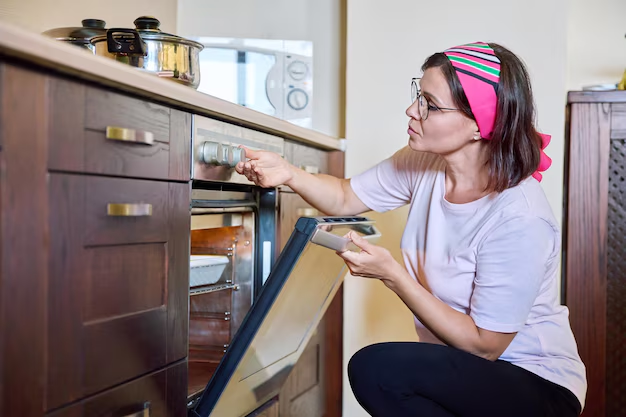Is It Safe to Use Bleach in Your Refrigerator? A Complete Guide
Your refrigerator is a daily workhorse, tirelessly keeping food fresh and safe. But how do you ensure it's clean and hygienic? You might wonder if bleach, a common cleaning agent, is suitable for this task. This article explores whether using bleach in your refrigerator is safe, practical tips for cleaning, and alternative methods that keep hygiene in check without compromising safety.
🧼 Understanding Bleach: What It Is and How It Works
Bleach 101: Bleach is a powerful disinfectant that effectively eliminates bacteria, viruses, and fungi. Its primary component, sodium hypochlorite, is renowned for its ability to sanitize numerous surfaces, making it a staple in many cleaning routines.
Common Uses of Bleach:
- Disinfecting Surfaces: Bleach is often used for sanitizing bathrooms, kitchens, and other high-touch areas.
- Whitening Fabrics: Its ability to strip color particles makes bleach a go-to for whitening clothes.
- Mold and Mildew Removal: The chemical's potency helps eliminate mold spores effectively.
Potential Risks: While bleach is a strong cleaner, it's not without risks. It's crucial to handle it with care, avoiding skin contact and inhalation. Additionally, improper use can lead to damage and discoloration of surfaces.
🧊 Can You Use Bleach in a Refrigerator?
When you consider using bleach in a refrigerator, safety and effectiveness are key points of concern. Refrigerators are food storage areas, so any cleaning agent must be used cautiously.
Pros of Using Bleach in Your Fridge
- Effective Germ Killer: Bleach can effectively kill harmful bacteria that might be lingering in your refrigerator.
- Mold Prevention: Regular cleaning with bleach can help prevent mold and mildew growth on interior surfaces.
- Odor Control: Bleach can help neutralize odors, leaving your fridge smelling fresh.
Cons and Considerations
- Food Safety Risks: Bleach residues can pose a risk if they contact food. It’s crucial to ensure thorough rinsing.
- Material Damage: Prolonged exposure can damage seals and gaskets due to the corrosive nature of bleach.
- Environmental Concerns: Bleach can impact the environment negatively and may not align with eco-friendly cleaning goals.
How to Safely Clean Your Refrigerator with Bleach
To use bleach safely in your refrigerator, follow these step-by-step instructions:
What You’ll Need
- A bottle of standard household bleach
- A bucket or spray bottle
- Warm water
- Soft cloths or sponges
- Gloves
- Eye protection (optional but recommended)
Step-by-Step Process
Empty the Refrigerator: Before starting, remove all food items. This ensures food safety and allows you to clean all surfaces thoroughly.
Prepare a Bleach Solution: Mix a bleach solution using one tablespoon of bleach per gallon of water. For small tasks, using a spray bottle for application is handy.
Apply the Solution: Wearing gloves, dip a cloth or sponge into the bleach solution and wipe down all surfaces, including shelves and drawers.
Rinsing: After cleaning, rinse all areas with clean water, ensuring no bleach residue remains.
Dry Thoroughly: Use a dry cloth to remove excess moisture. Leave the refrigerator open briefly to air-dry before replacing food items.
Refrigerator Gasket Attention: Take extra care with the gaskets. Gently wipe them down, thoroughly rinsing and drying to avoid erosion.
🌿 Alternative Cleaning Methods for Refrigerators
While bleach can be effective, several alternative methods offer safe, eco-friendly solutions:
1. Baking Soda
How It Works: Baking soda is a natural abrasive and deodorizer. It is perfect for scrubbing off stains and neutralizing odors.
Application: Mix with water to form a paste, apply to surfaces, scrub gently, and rinse.
2. Vinegar
How It Works: Vinegar is a natural disinfectant with antimicrobial properties.
Application: Mix equal parts vinegar and water in a spray bottle, apply to surfaces, and wipe down using a cloth.
3. Lemon Juice
How It Works: The acidity in lemon juice can help break down grime and provide a fresh scent.
Application: Mix lemon juice with water to clean and deodorize simultaneously.
📝 Quick Tips for Maintaining a Clean Refrigerator
To ensure your refrigerator remains clean and hygienic, consider these best practices:
- Regular Cleaning Routine: Wipe down spills and crumbs immediately to prevent bacterial growth.
- Frequent Organization: Regularly check and organize your fridge, discarding expired items.
- Odor Management: Use an open box of baking soda or activated charcoal in your fridge to absorb lingering odors.
- Liner Use: Place liners on shelves and drawers to prevent spills from settling and making cleaning easier.
🔍 Summary of Using Bleach in Refrigerators
Here’s a concise overview of using bleach and alternatives for refrigerator cleaning:
| 🔹 Task | 🔹 Preferred Method | 🔹 Why |
|---|---|---|
| Disinfecting | Bleach (with caution) | Kills germs effectively |
| Mold Prevention | Bleach or Vinegar | Stops mold growth |
| Odor Control | Vinegar, Baking Soda | Neutralizes and absorbs odors |
| Eco-friendly Cleaning | Baking Soda, Lemon Juice | Natural, non-toxic alternatives |
Conclusion: Making the Right Choice for Your Fridge
When deciding whether to use bleach in your refrigerator, weigh the benefits against the possible risks. If you choose to use bleach, ensure you follow proper safety protocols to minimize risk. However, if you're inclined toward more natural solutions, baking soda, vinegar, and lemon juice offer excellent alternatives. By maintaining a regular cleaning routine, you can keep your fridge safe, fresh, and hygienic — ensuring your food remains safe to consume.
Taking these practical approaches can effectively preserve your appliance's longevity and functionality while promoting a healthier household environment. 🌿
